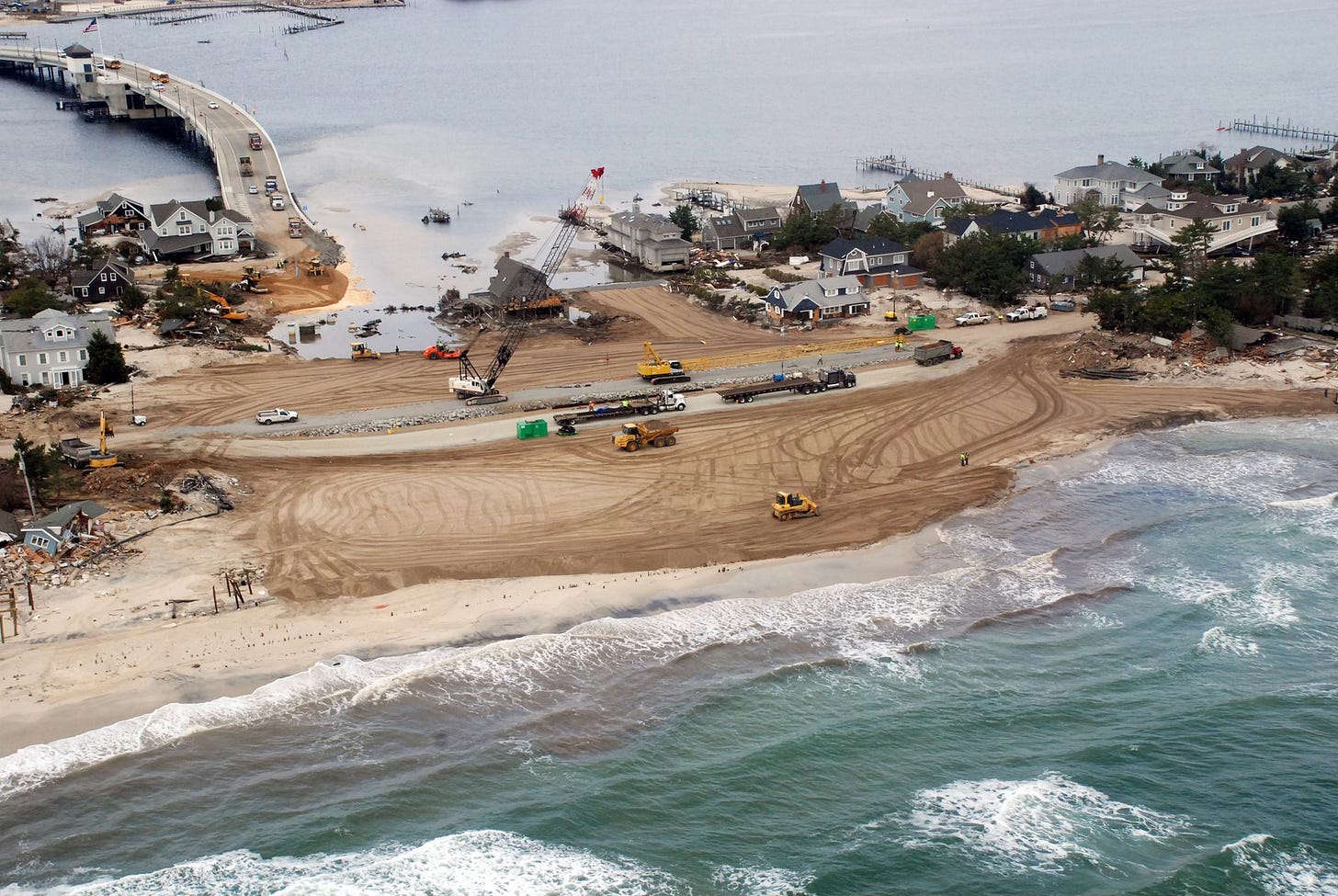Local resilience is a geophysical & financial imperative
Human security depends on our ability to reduce risk & establish resilient conditions in local communities, while providing systems that alert us to danger & accelerate emergency response.
The geophysical security of local communities is less certain in our age of deep climate disruption. This growing uncertainty points to an increasingly certain need: More work, more investment, more resources, are required to reduce risk, establish and maintain infrastructure, and provide meaningful crisis response.
The most important resilience insight all communities need to keep in mind is that shock impacts do not necessarily require all-time-record storms. As sea levels rise, flooding is more likely, even in weaker storm events; as air heats up, moisture accumulates and sudden-onset torrential rains and flash floods become more likely.
This also holds for the impact of droughts and other forces that degrade ecosystems and watersheds. As air and water heat up, ecosystems are already being disrupted, often resulting in increased vulnerability and declining biodiversity. This means new increments of heat and disruption can cause a greater amount of breakdown than is likely expected, as system breakdown has already begun.
The horrific tragedy of the central Texas floods points to the urgent need for increased—not decreased—investment in Earth systems observation, science translation, weather forecasting, and early warning, including local staffing and resource mobilization. This tragedy is mirrored by shock floods that killed hundreds of people in the farm market town of Mokwa, in rural Nigeria. Lack of early warning and flood defenses has been blamed for the catastrophic loss of life in Mokwa.

Coastal communities facing storm surges, sea level rise, and subsurface saltwater intrusion, need to plan for, get real-time, updated, detailed information about risks, and take coordinated action to reduce risk and build resilience. Farming communities need to develop sustainable water management strategies, reduce farmland pollution, to protect pollinators and ecosystems, including living soil biomass, and find innovative ways to allow small-scale actors to access and utilize high-quality climate data.
Mountain and forest communities facing risks from mudslides and wildfires need to develop always-on monitoring strategies, early warning systems, and flexible rapid evacuation plans, to reduce loss of life and improve the chances of successful rebuilding and recovery.
In 2024 and 2025, the United States experienced two shock events estimated to have led to more than $250 billion in costs over time—Hurricane Helene and the Los Angeles fires. Each of those events cost more than all of the billion-dollar disasters affecting the United States from 1980 to 1989, which added up to $219 billion.
The costs of inaction are accumulating fast.
This has implications for fiscal stability. Public budgets are being depleted across the world, even in the wealthiest countries. The need for new, climate-sensitive infrastructure and advanced adaptive management strategies, is turning into realtime major costs for governments at all scales.
Businesses dependent on tax incentives and direct or indirect subsidies (such as funding for specific kinds of infrastructure) will see their own operational security degraded, and will find it more expensive to achieve the same rate of return. This will impact credit, lending, and insurance access. Many businesses large and small are already finding these new nonlinear costs to be prohibitive.
While some welcome this crunch-time dynamic as an opportunity for bold innovation, the reality is: the businesses and industries that are relevant and prosperous in coming decades will have to have answers to these challenges. Climate-smart enterprise is becoming a priority concern for anyone positioned to make choices about which incentives shape markets and local economies.
Local business models that provide operational resilience value might include:
Storage, distribution, and retail of sustainably produced foods;
Construction and infrastructure services that reduce climate-related risk;
Innovative clean energy system services—including wind and solar, but also emerging technologies and solutions;
Right-scaled local data translation, such as water management, soil carbon, and ecological health data linked to value chains or financial transactions;
Commercial banking and insurance, from micro- to medium-scale;
Climate-sensitive engineering and urban planning, suited to adaptive management needs.
Any climate-stressed society needs to develop reliable measures of local risk and resilience, including related pressures on operating costs, and the financial levers available to ensure better practices prevail and risk, harm, and cost, are reduced in a given landscape or operating context. Even those businesses that will not make use of specialized climate incentives may benefit from their rolling out locally, to provide a safer operating environment for all.
Learn more about emerging macrocritical resilience metrics at Activv.net, which is working to develop the Active Value Trust Rating.





